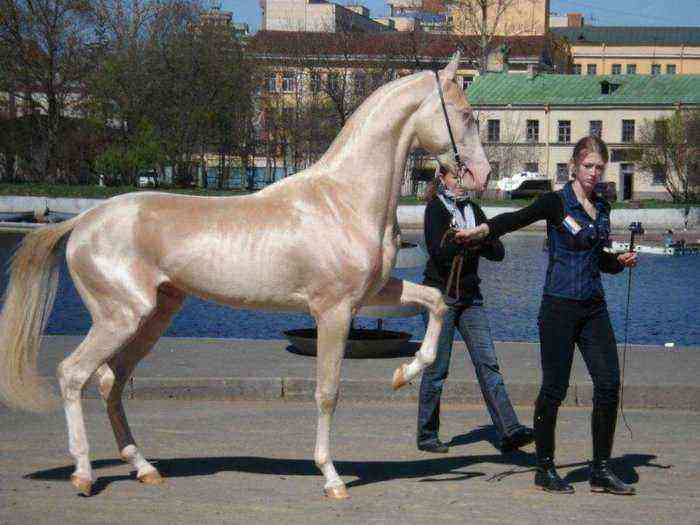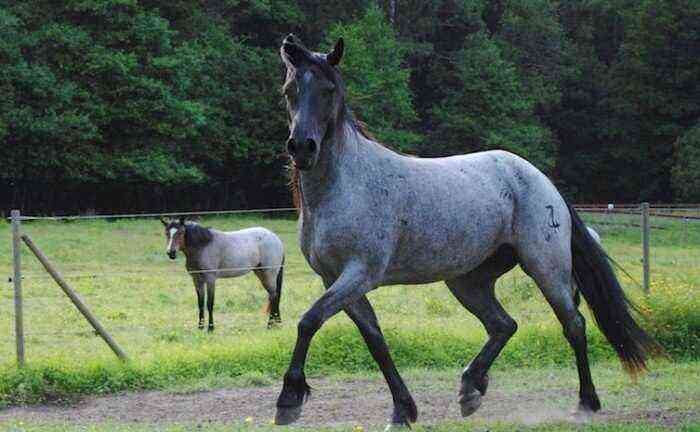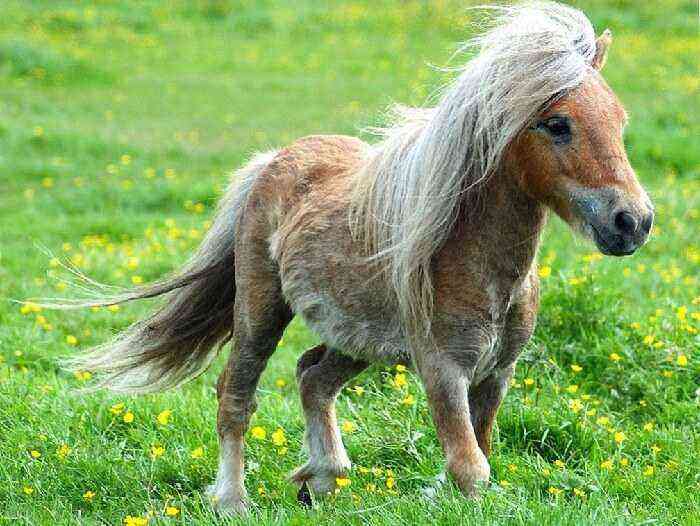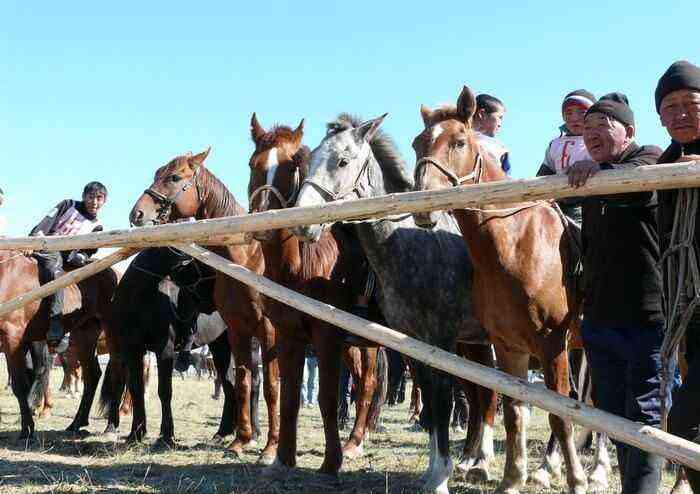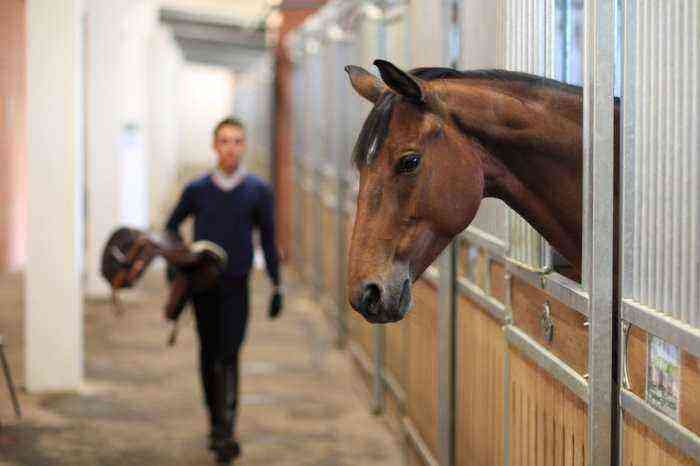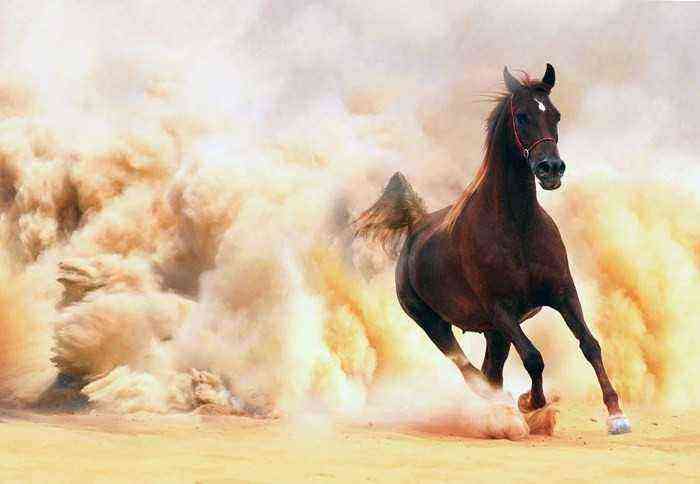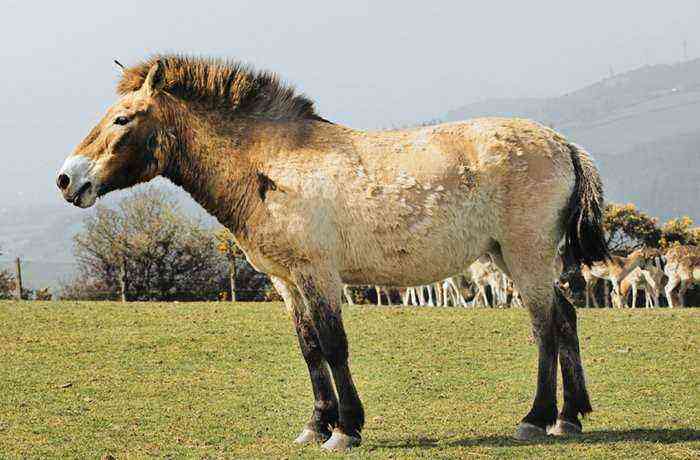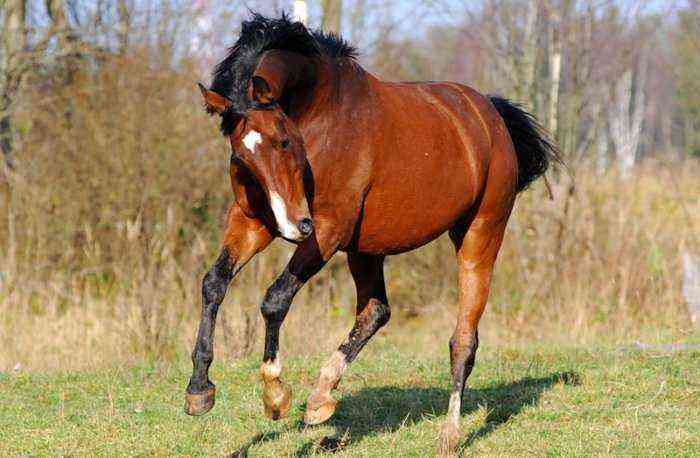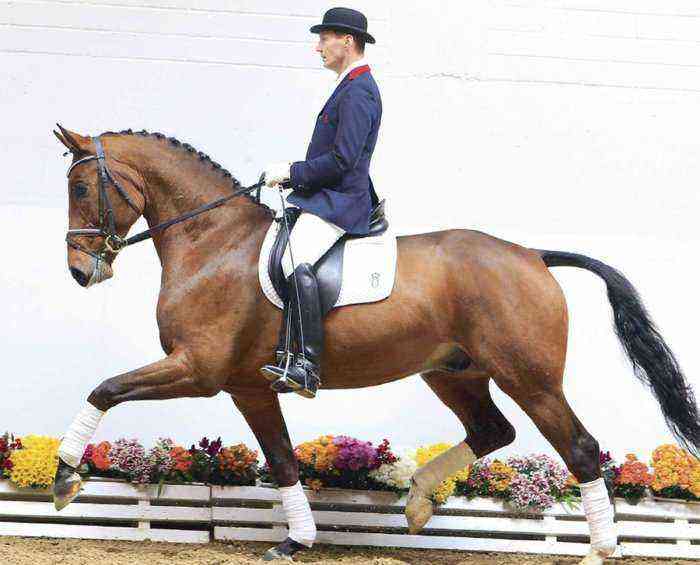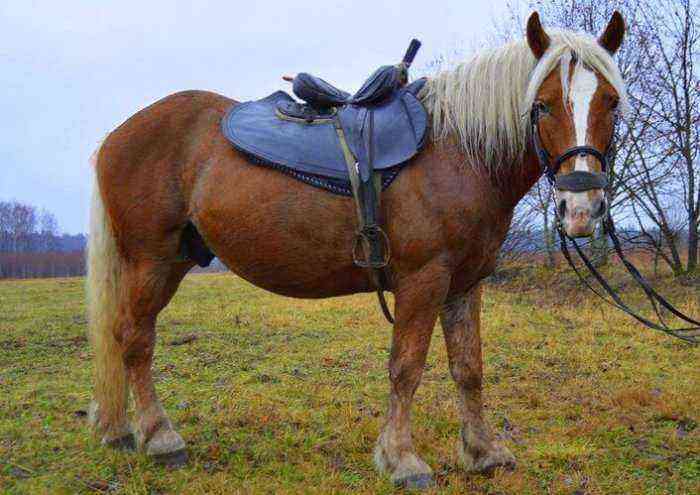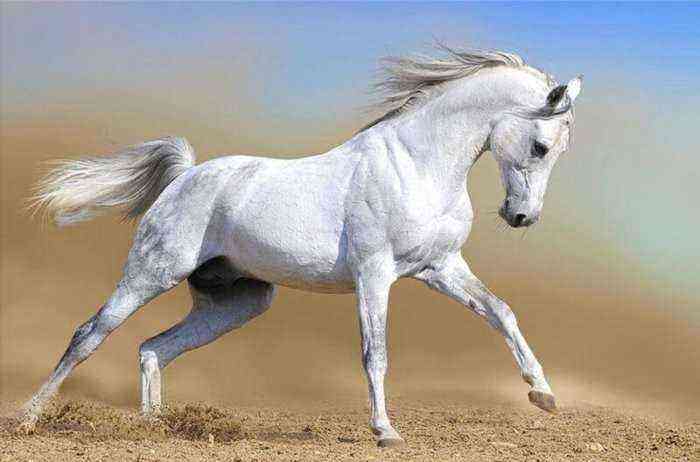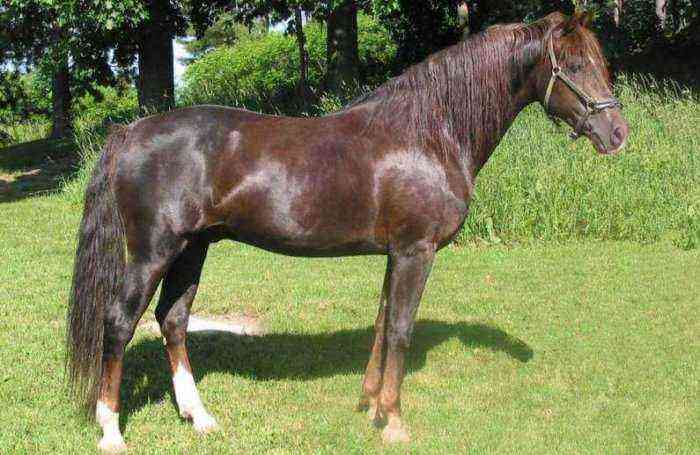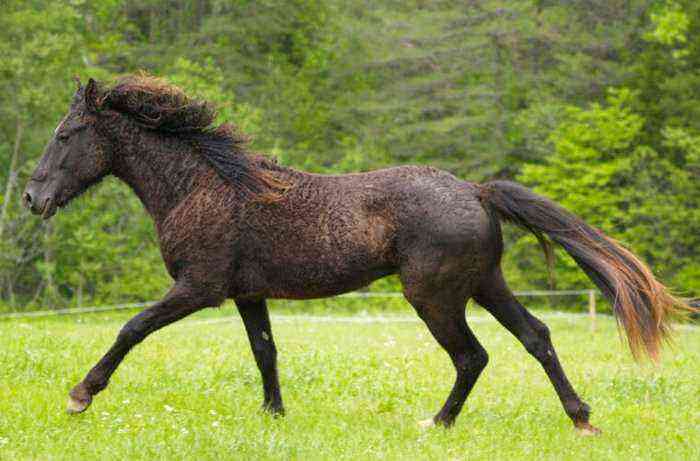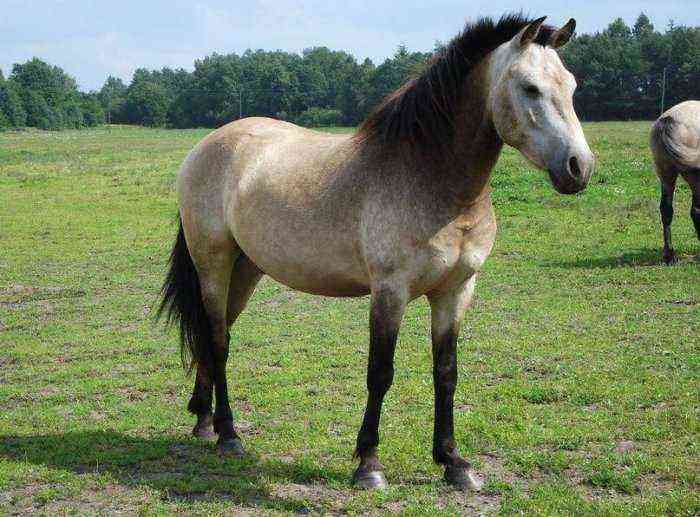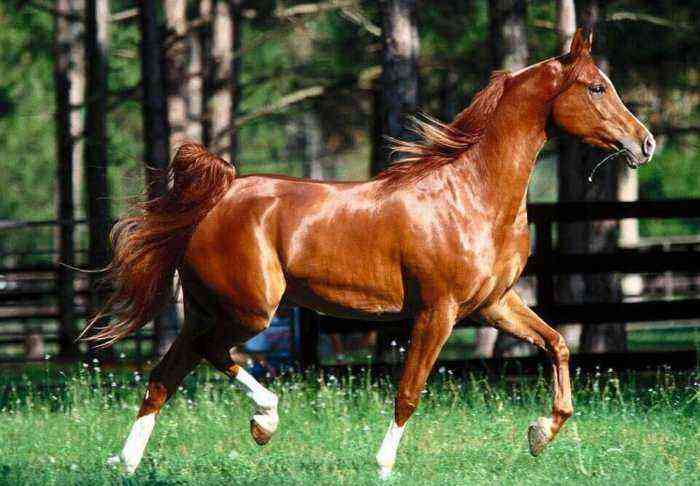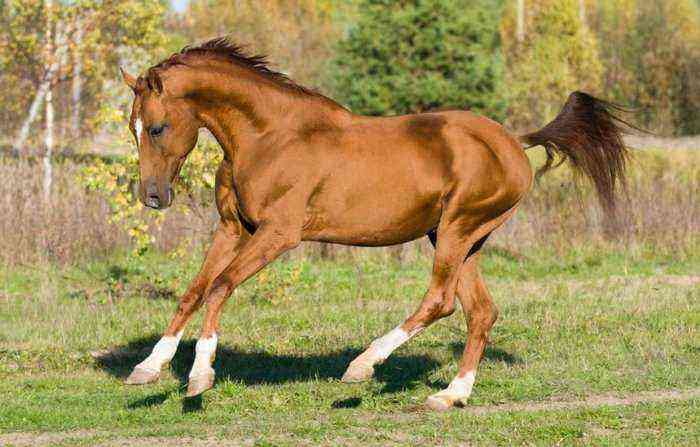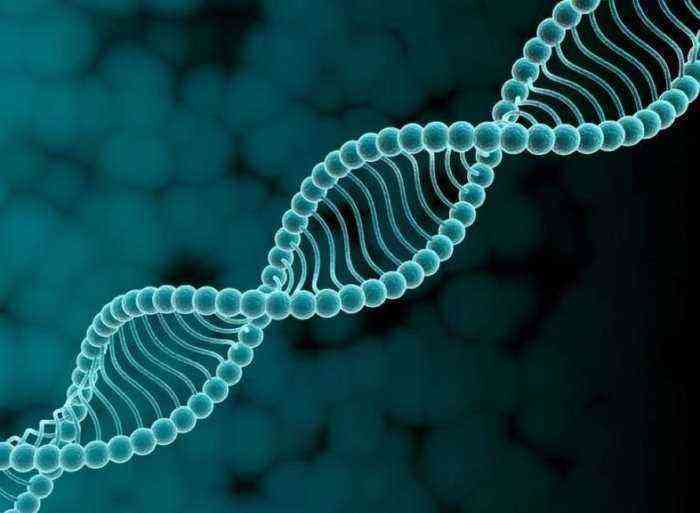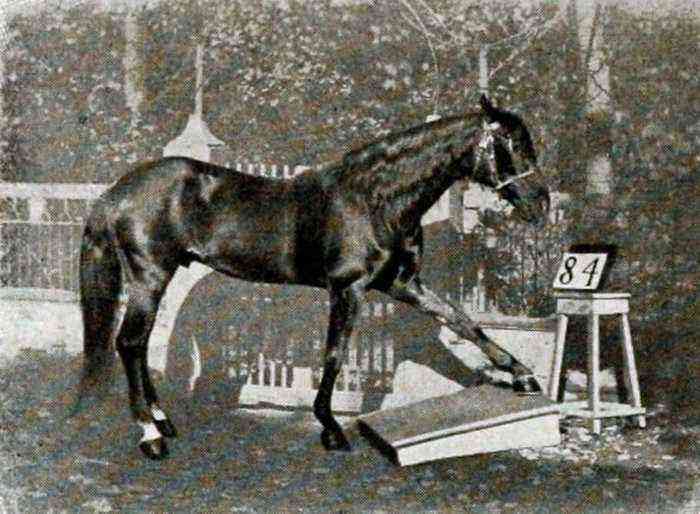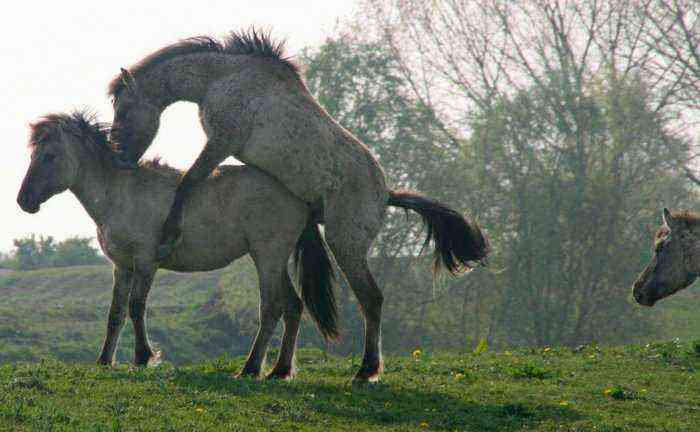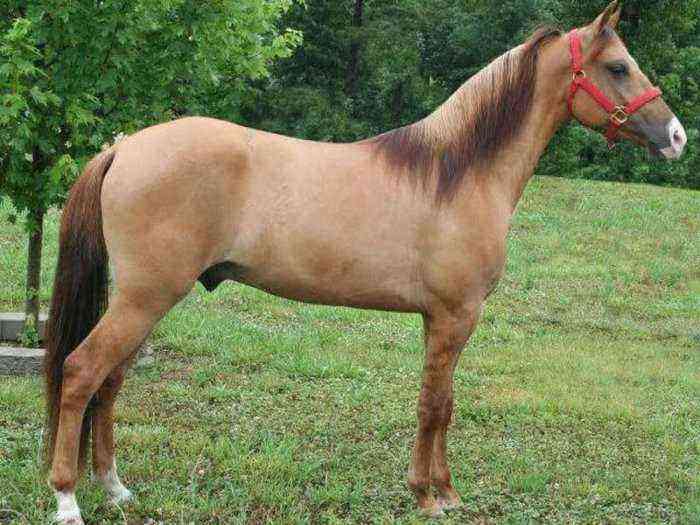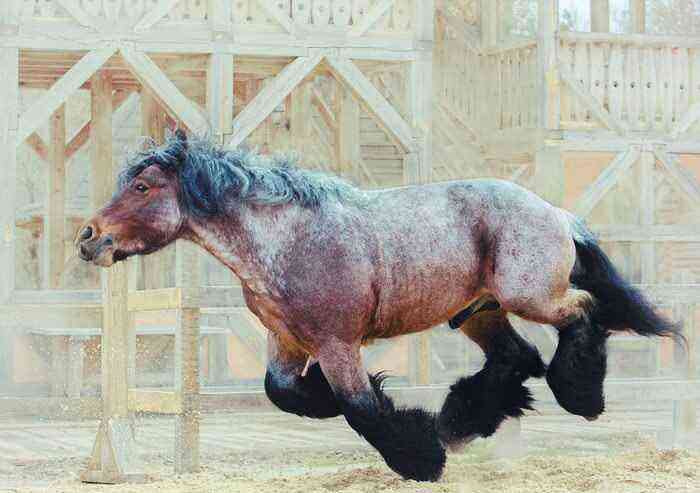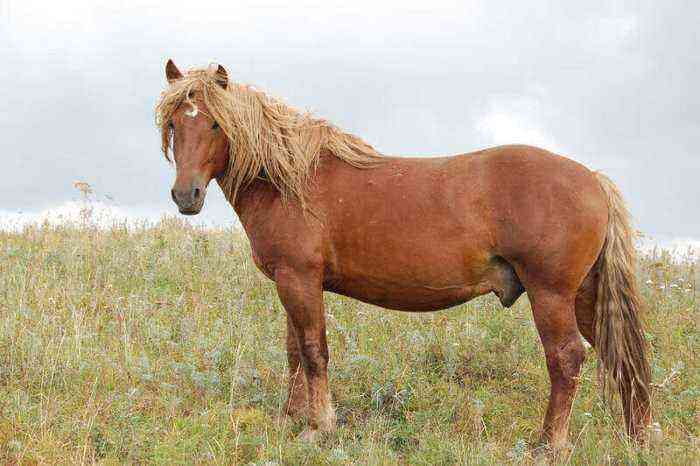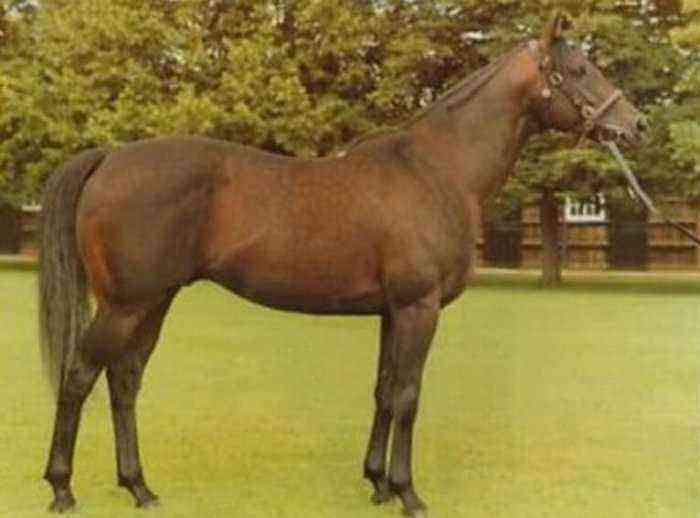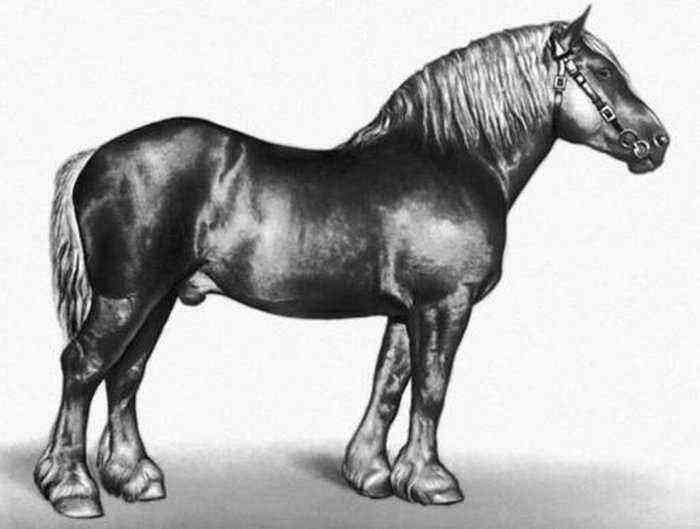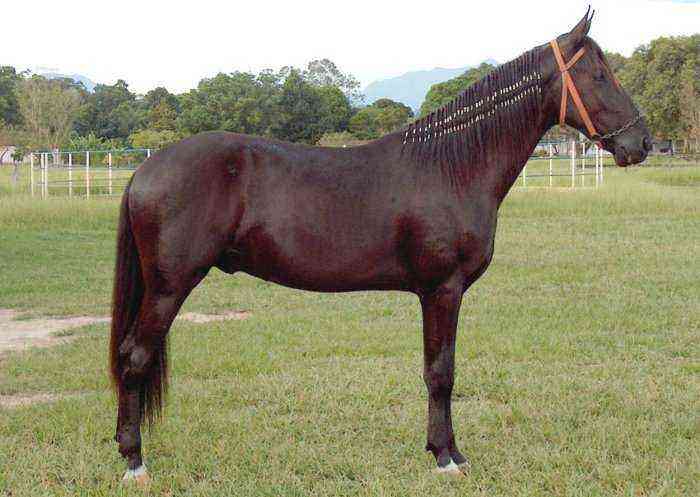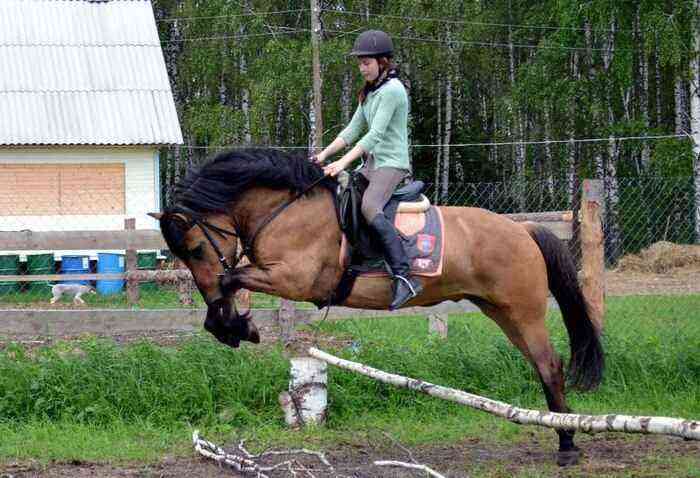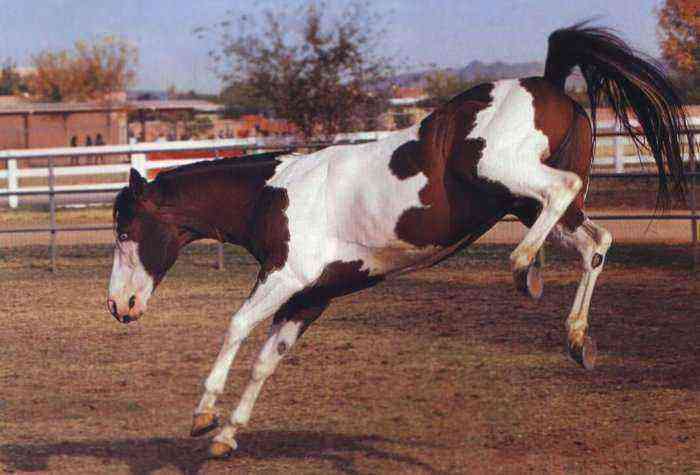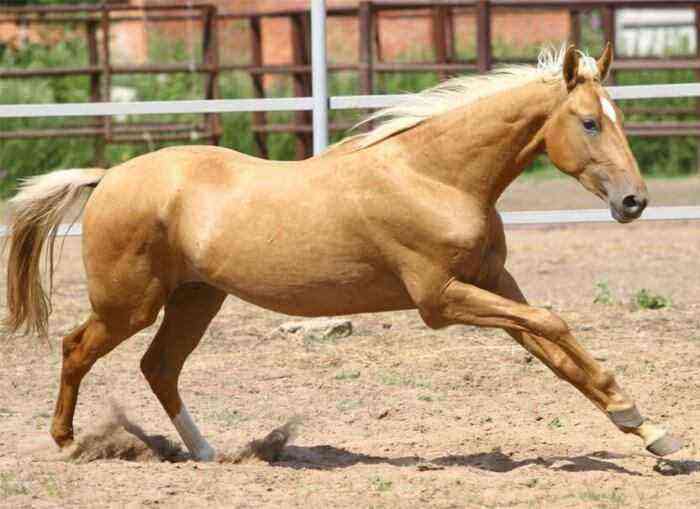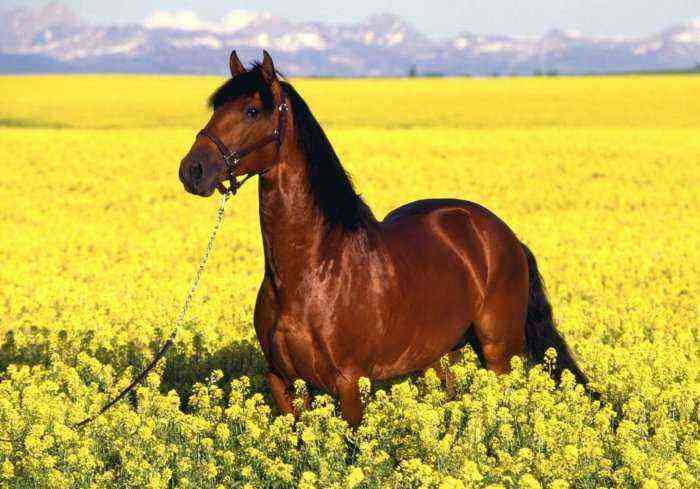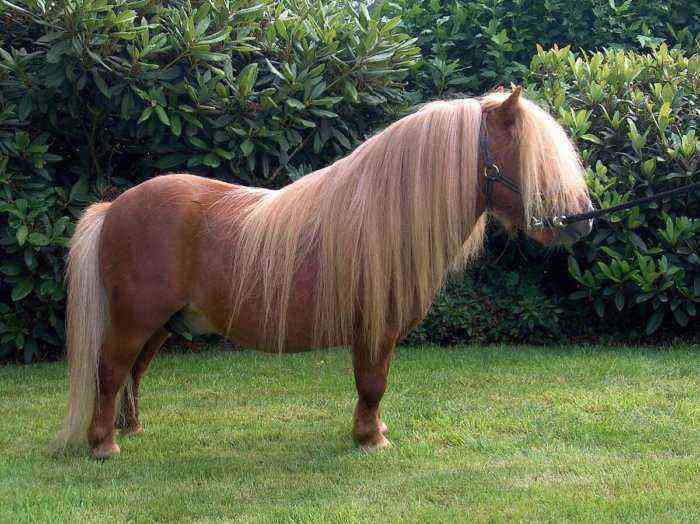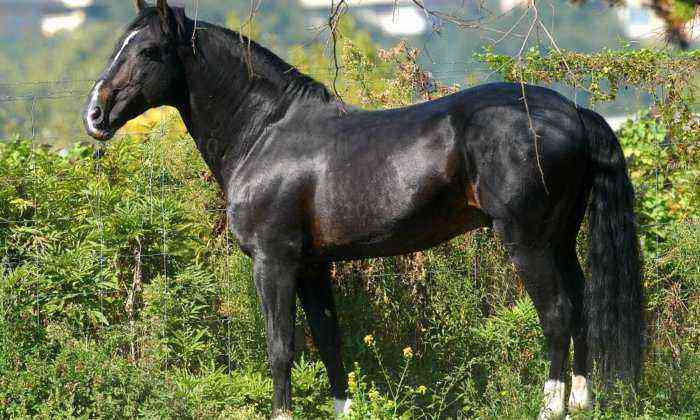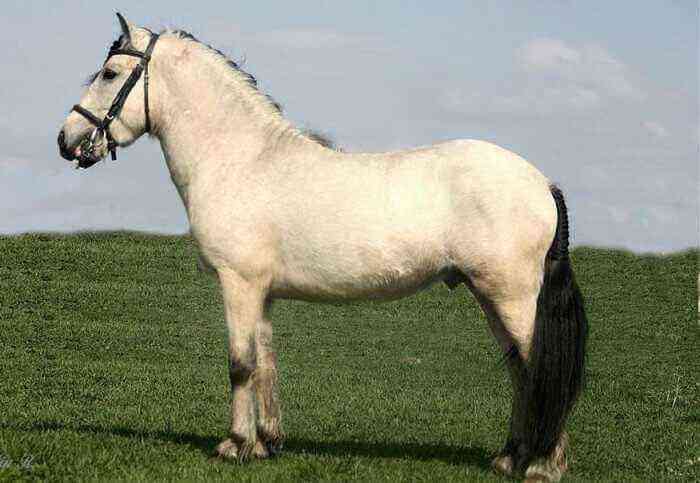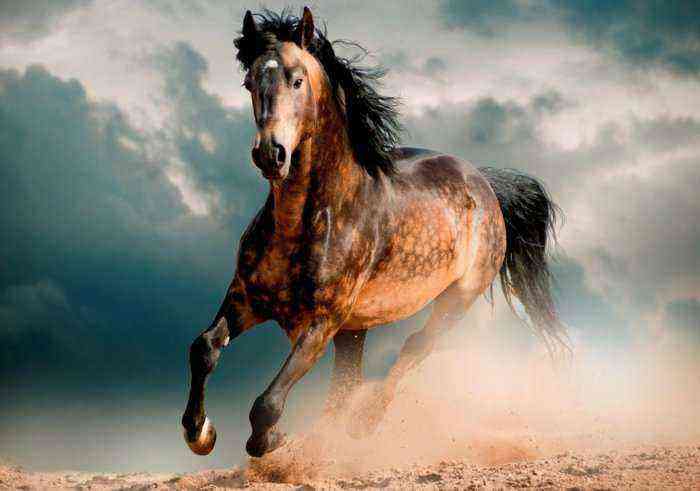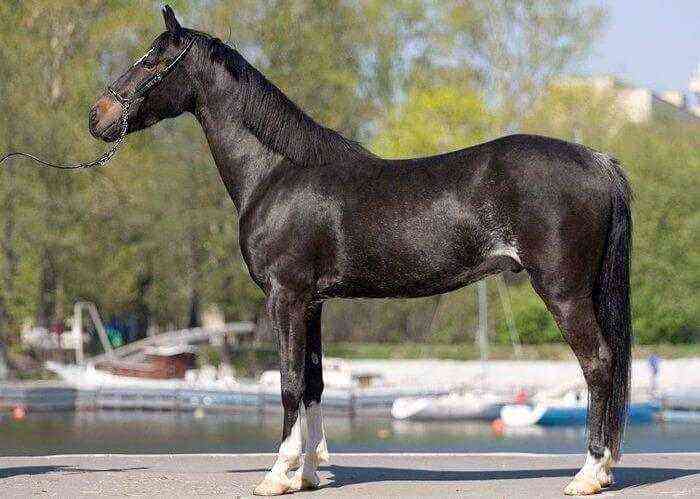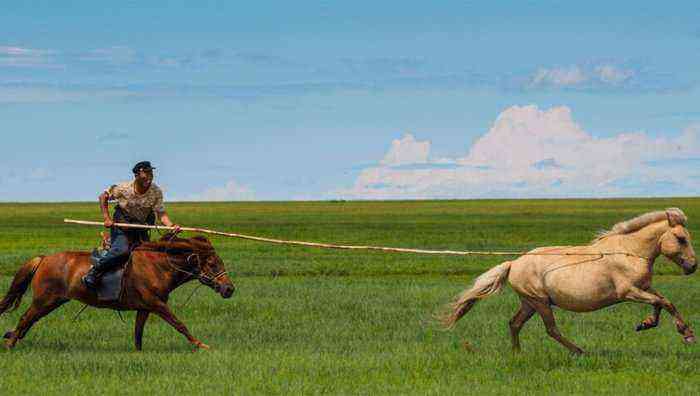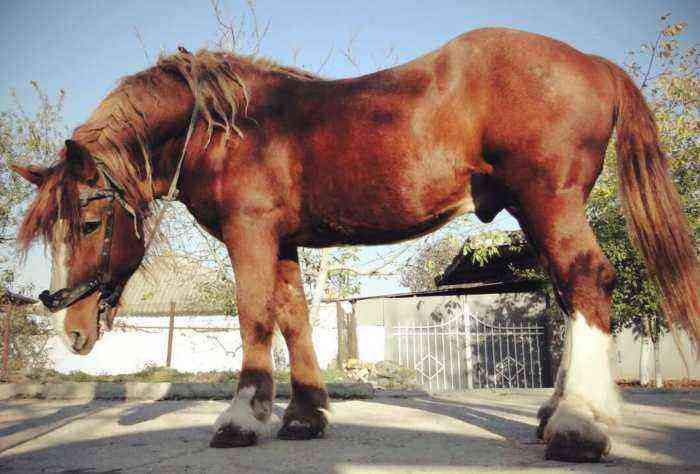According to statistics, every tenth German is engaged in horseback riding. Horse breeding in Germany is not only a business, but also a lifestyle. Several of the largest stud farms are concentrated in this country. German horse breeds are of interest not only to the inhabitants of this country, but also to the whole world.
Horse breeding in Germany
Horse breeding in Germany
The Germans have been breeding horses for centuries. The need for strong and fast horses was formed in the Middle Ages. The inhabitants of Western Europe in those days, with their characteristic pedantry, worked on the creation of new breeds capable of bearing the weight of riders dressed in iron armor. Most of the breed lines in Germany were bred between the 15th and 19th centuries.
Today, German horses show excellent results in races.. They easily win prizes and medals. Breeders in Germany pay special attention to the selection of individuals for reproduction. Horses allowed for breeding:
- passed a veterinary examination;
- conforming to the requirements of the exterior;
- demonstrating clear and correct movements on hard ground, on the arena, in the stance and jumps.
Attention! Individuals that have not passed the selection for one of the requirements are subjected to castration.
The Germans are very fond of equestrian sports. This is confirmed by the numerous victories of horses from Germany. They are especially good in dressage, vaulting and show jumping. For more than 30 years, riders from this country have been the undisputed leaders. German horse breeds, however, are unsuitable for triathlon. In this direction, they failed to achieve success. Stallions with predominantly English blood are suitable for this sport.
German horse breeds
Most German breed lines are designed for sports and riding. They are fast and hardy, smart and obedient. Germany also has its own trotting breed, it is called the German trotter.
Hanoverian horse
The first mention of these animals that inhabited the territory of Prussia date back to the 6th century. Aboriginal horses did not have a beautiful exterior, but they were hardy and strong. In 1735, under the patronage of George II, a stud farm was established in Celle. On its territory, local mares with good signs were crossed with stallions of the Danish, Trakehner, Andalusian and Thoroughbred riding breeds.
It took almost 100 years before the population of Hanoverian horses appeared. These were universal horses, which were used both for hard work and in light harness. During the time of Napoleon, the number of livestock decreased, at the disposal of the stud farm there were only 30 individuals suitable for reproduction. Then the best mares were crossed with thoroughbred English horses. After that, a new generation of horses lost their working qualities, but changed outwardly and became noticeably faster.
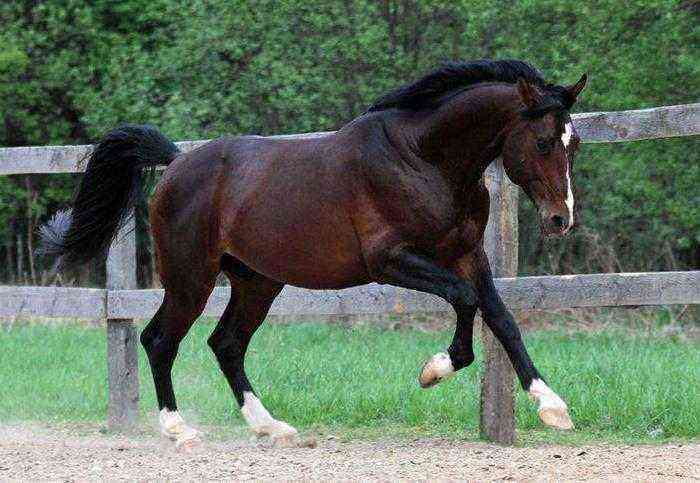
Hanoverian horse breed
The breed underwent changes during the First and Second World Wars, it was enlarged, and then again they worked on facilitating the constitution. The Hanoverian horse was finally formed in the post-war years, when interest in equestrian sports increased. By this time, the horses had lost their economic importance, the heavy work in the fields was now performed by machines.
External characteristics:
- harmonious physique of a sports type;
- height – 162–170 cm;
- long neck, well-defined withers;
- a neat head with a hunchbacked profile characteristic of the Hanoverians and intelligent brown eyes;
- muscular body;
- oblique prominent shoulders;
- flat dry back;
- slightly raised compact croup;
- long sinewy limbs with large joints and short pasterns;
- luxury ponytail with a high fit;
- suit – bay, black, less common red coat color.
Trakehner
The ancestors of this ancient breed are Zhmud mares and oriental stallions. During the time of the Knights of the Teutonic Order, Prussia was interested in having strong, hardy and courageous horses that would be used to protect the state. In 1400, about 30 stud farms operated on the territory of the state, they bred riding and heavy draft horses.
In the 18th century, at the insistence of Frederick I, another factory began work in the city of Trakenen, where a completely new German breed of horses was created. Breeding activity was carried out on the basis of oriental, Danish and English stallions. Later, in the 19th century, the breeding horses of the Trakehner breed gained popularity among aristocrats and were officially recognized.
Features:
- average height – 1,68 m;
- massive strong physique;
- the head has a wide frontal part and is distinguished by a slightly concave neat profile;
- powerful neck with a shallow bend;
- strong back and lumbar;
- massive croup with prominent muscular relief;
- strong legs;
- the color of the Trakehner horse is characteristic – red or bay, black and gray color is rare.
Holstein
Among the German breeds of horses, it is worth highlighting the Holstein, it is considered one of the most ancient in Germany. The ancestors of modern representatives of this line are Neapolitan, Oriental and Spanish horses. The Yorkshire carriage horse also influenced the development of the modern Holstein.

Holstein horse
The population was finally formed at a stud farm located in the city of Elmshorn in Germany, when purebred English riding horses were brought there. Thanks to the successful breeding of these stallions with local mares, the Hanoverian breed of horses appeared. From their ancestors, a new generation of animals inherited not only the athletic build of the body, but also speed and endurance.
External characteristics:
- stallion height is 1,68–1,72 m;
- the body is muscular;
- deep chest;
- shoulders oblique;
- the head is small with a straight, thin profile;
- the neck is long, wide at the bottom, with a beautiful bend;
- the limbs are long, dry, sinewy, the setting is correct;
- pasterns are wide, up to 24 cm in diameter;
- croup is light, neat;
- a common suit is bay.
Holstein horses have a calm disposition, show humility, and are easy to train. They are dynamic, hardy, plastic and graceful.
Attention! The famous bay stallion named Meteor brought his country 3 Olympic medals.
oldenburg horse
The ancestors of the Oldenburg horses were Frisians and native horses. Initially, these animals were used in military battles, and when knightly times have sunk into the past, they were used to transport heavy loads and agricultural work.
In the 17th century, during the reign of Count Oldenburg, this breed line gained many admirers in Europe, it was thanks to this man that it got its name. Until the middle of the 19th century, the horse breeding program was aimed at preserving the exterior features, large forms and strength of the horses.
With the beginning of the development of mechanization, the purpose of breeding horses also changed. The need for heavy-duty breeds has disappeared, but interest in equestrian sports has increased. Oldenburg mares were now crossbred with purebred English stallions. It was necessary to work on facilitating the constitution of the body of animals and instill in them racing qualities.
Attention! Modern representatives of the Oldenburg breed are distinguished by a stately physique, have grace and grace, their movements are smooth and rhythmic. Best of all, the horses showed themselves in dressage and show jumping.
Exterior feature:
- height – 1,68–1,78 m;
- the size of the head is medium, the muzzle has an elegant beautiful profile;
- elongated powerful neck;
- wide expanded chest;
- large body with developed muscles;
- the length of the legs is medium, they are sinewy and strong;
- the prevailing colors in the breed are bay, black, there are usually white marks on the muzzle and limbs.
Westphalian breed
The first mention of horses from Westphalia dates back to the 15th century. Previously, these animals lived in local forests in eastern Germany. They were distinguished by their small stature and strong physique, and were well adapted to local conditions. Wild horses turned out to be unpretentious and hardy, which attracted the attention of residents of nearby provinces.
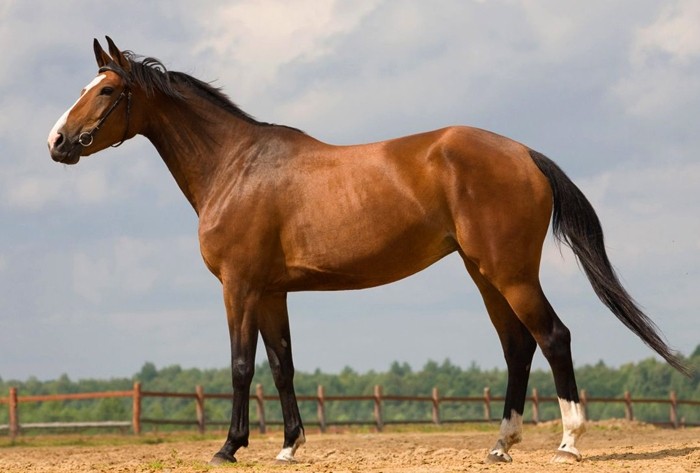
Westphalian horse
In those days, Westphalian mares were crossed with representatives of different breed lines in Europe – stallions from Holland, Italy and Spain, but it was not possible to get worthy offspring from such parents.
At the beginning of the 19th century, horse breeding in Westphalia was in a sad state. Local horses were unsuitable either for the army or for breeding. Repeated attempts were made to increase the stature of the Westphalians. For this, German breeds of horses were used – Oddenburg and Hanoverian. Toward the end of the 19th century, the blood of Percherons, Brabancons, Ardennes and Clydesdales was added to the local population, wanting to enlarge the breed and create a new type of heavy trucks.
Attention! A significant contribution to the development of horse breeding in Westphalia was made by Baron von Schorlemmer-Alst. Thanks to this man, several associations have been formed in the province, breeding horses of two types – heavy draft horses and half-breed horses. Since 1920, breeding work has been carried out on the basis of Hanoverian stallions.
After the Second World War, most of the livestock was lost, but breeding work was resumed. With the development of mechanization, the main attention was directed to improving the athletic qualities of Westphalian horses. The breed was improved at the Fornholz factory.
Modern representatives of the Westphalian breed are participants in various competitions. They excel in show jumping and dressage. In 1988, at the Olympic Games in Seoul, the German team won a gold medal, and 3 stallions of this breed were included in its composition.
Outwardly, the Westphalians resemble the Hanoverians, but the latter are distinguished by a larger skull. Characteristics:
- height – 1,65–1,7 m;
- massive body with a well-developed deep chest;
- long curved neck;
- neat rounded croup, turning into strong sinewy limbs of medium length;
- the pasterns are shortened, the hooves are small with a strong horn;
- colors – red, bay, black, occasionally found gray.
german trotter
In the 17th century, interest in horses was growing in Europe, capable of running at a steady trot for a long time. Such animals were used to transport passengers over long distances. The Germans were no exception. They set out to breed a new breed with good trotting qualities. To do this, they bought American standardbred stallions and mares, French and Oryol trotters.
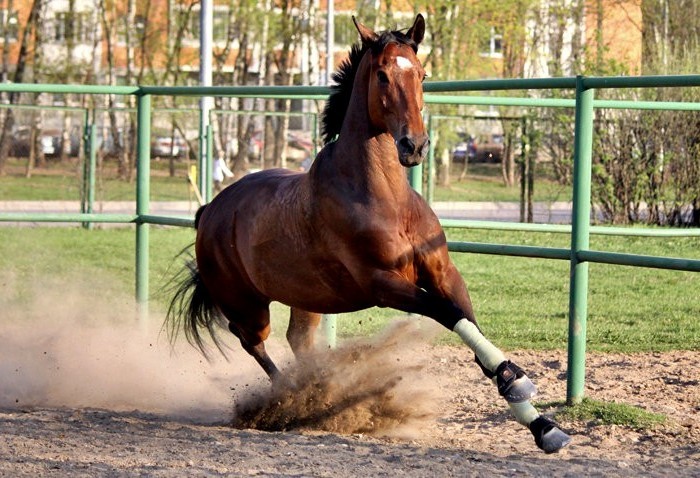
German trotter breed
The Germans conducted a very strict selection of foals, giving preference to the most frisky, hardy, graceful and beautiful individuals.. As a result, a new trotting breed was formed. Today, its representatives are distinguished by excellent running qualities and easily leave rivals behind them, winning numerous awards.
Exterior features:
- short stature – 150–155 cm;
- lean physique;
- Long neck;
- the line of the back is even;
- compact dry head with correct straight profile;
- long sinewy legs;
- muscular croup;
- suit – bay.
South German horse
The breed appeared in the 19th century, when the Austrian Norikens were brought to the territory of Bavaria. Later, the blood of Oldenburg and Holstein horses, as well as heavy trucks from Belgium and the Clydesdales, was added to their descendants. Under their influence, the constitution of animals became stronger, and horses – higher. As a result, a South German horse was formed, with a beautiful physique, endurance and strength.
Characteristic:
- height – 1,6 m;
- fairly large head with a straight profile;
- expressive, kind eyes;
- wide short neck;
- powerful shoulder girdle;
- dense straight back;
- deep chest;
- long dry legs with small feathers at the bottom;
- luxurious soft mane;
- suits – bay, playful, brown.
Each of the German horse breeds has its own interesting history. Residents of Germany treat these animals with trepidation and love equestrian sports. The stud farms operating in the country are constantly working to improve the characteristics of horses. The Germans were able to achieve success in breeding horses thanks to their scrupulousness, pedantry and unwillingness to compromise.
